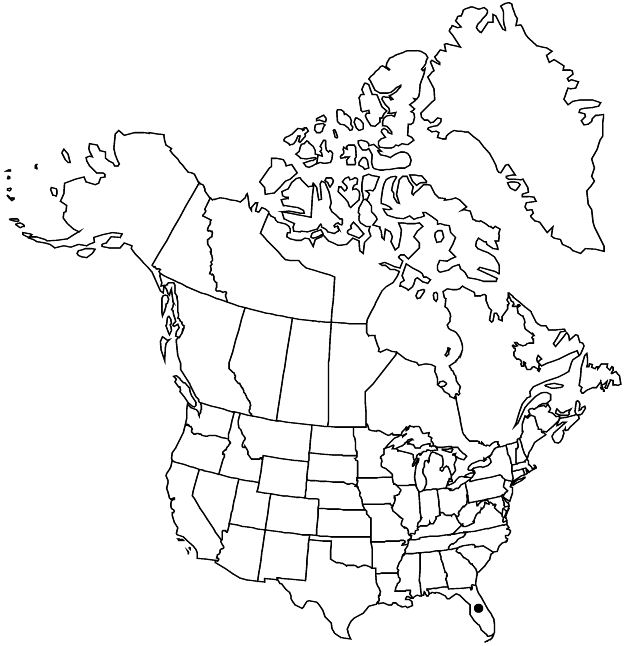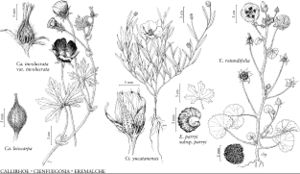Cienfuegosia yucatanensis
Publ. Field Columbian Mus., Bot. Ser. 2: 74. 1900.
Plants without woody rootstock. Stems erect, glabrous. Leaves: stipules subulate, 1–2 mm; petiole 1 / 4 – 1 / 2 length of blade, glabrous; blade narrowly oblong-lanceolate, usually 2–4 cm, 4–10 times as long as wide (juvenile leaves sometimes wider), margins entire, apex acute, surfaces glabrous. Pedicels 1–5 cm, surmounted by 3 involucellar nectaries or nectaries absent; involucellar bractlets 6–9, subulate, 0.5–2 mm. Flowers: calyx 8–12 mm, punctate, glabrous; corolla rotate, 1–2 cm; staminal column pallid, apically 5-dentate; style pallid; stigmas 3, pallid. Capsules ovoid, 3-locular, 6–8 mm, glabrous externally, prominently ciliate internally. Seeds 2–3 mm, densely hairy, hairs brownish. 2n = 20.
Phenology: Flowering spring–summer.
Habitat: Open, arid sites
Elevation: 0–100 m
Distribution

Fla., Mexico (Yucatán), West Indies (Bahamas, Cuba).
Discussion
In the flora area, Cienfuegosia yucatanensis is known from Monroe County in the Florida Keys; it has sometimes been misidentified as C. heterophylla (Ventenat) Garcke.
Selected References
None.
